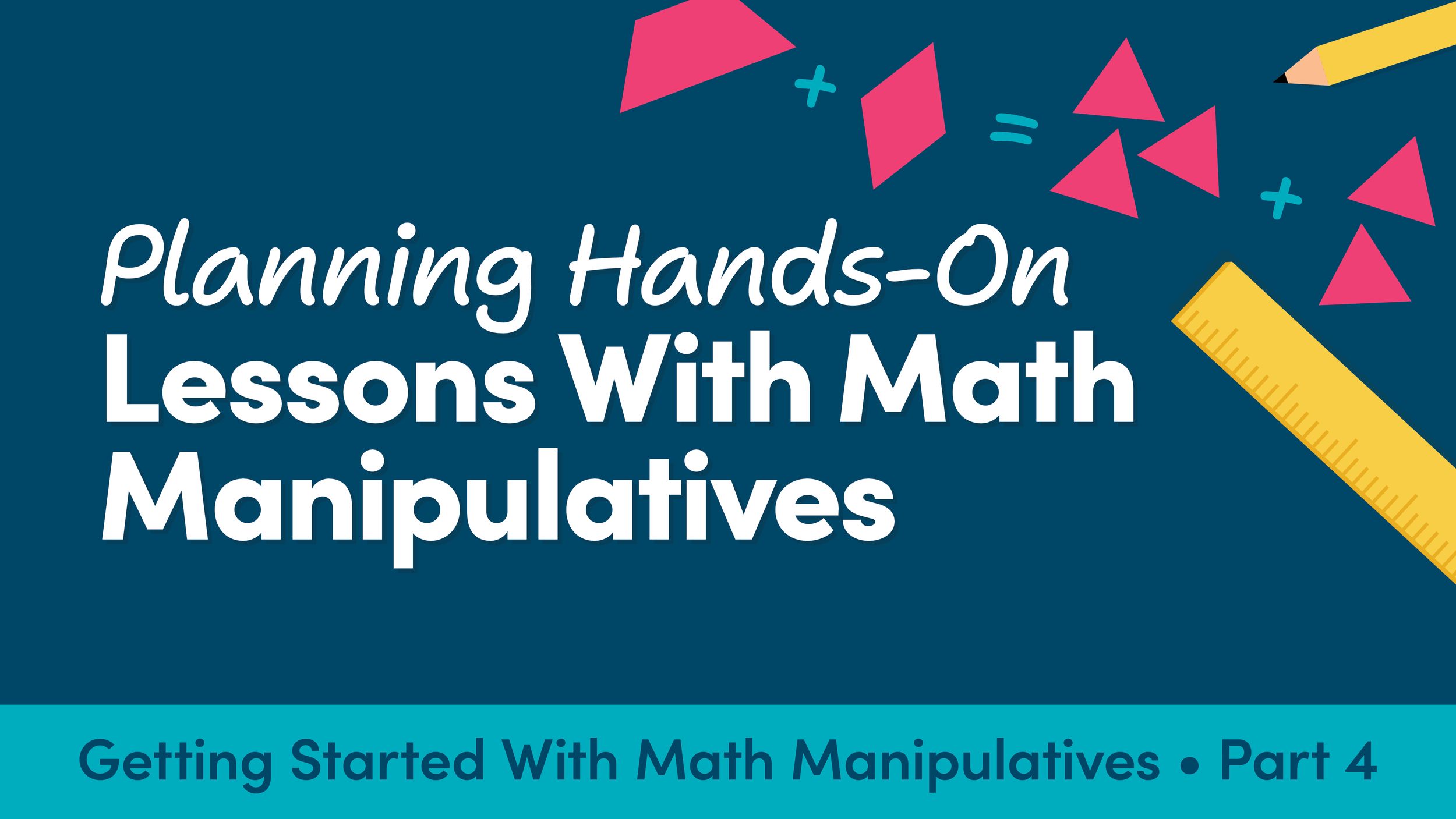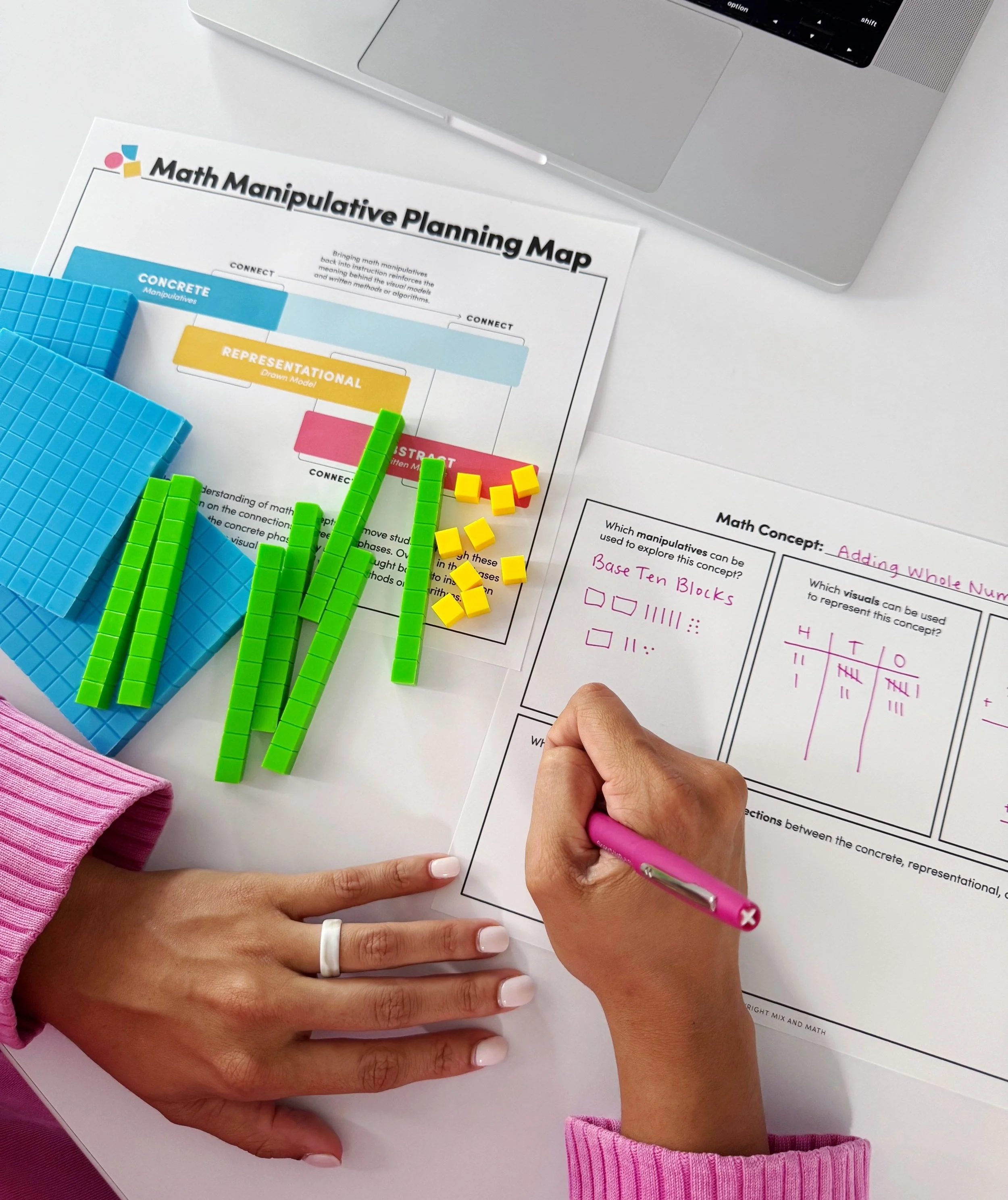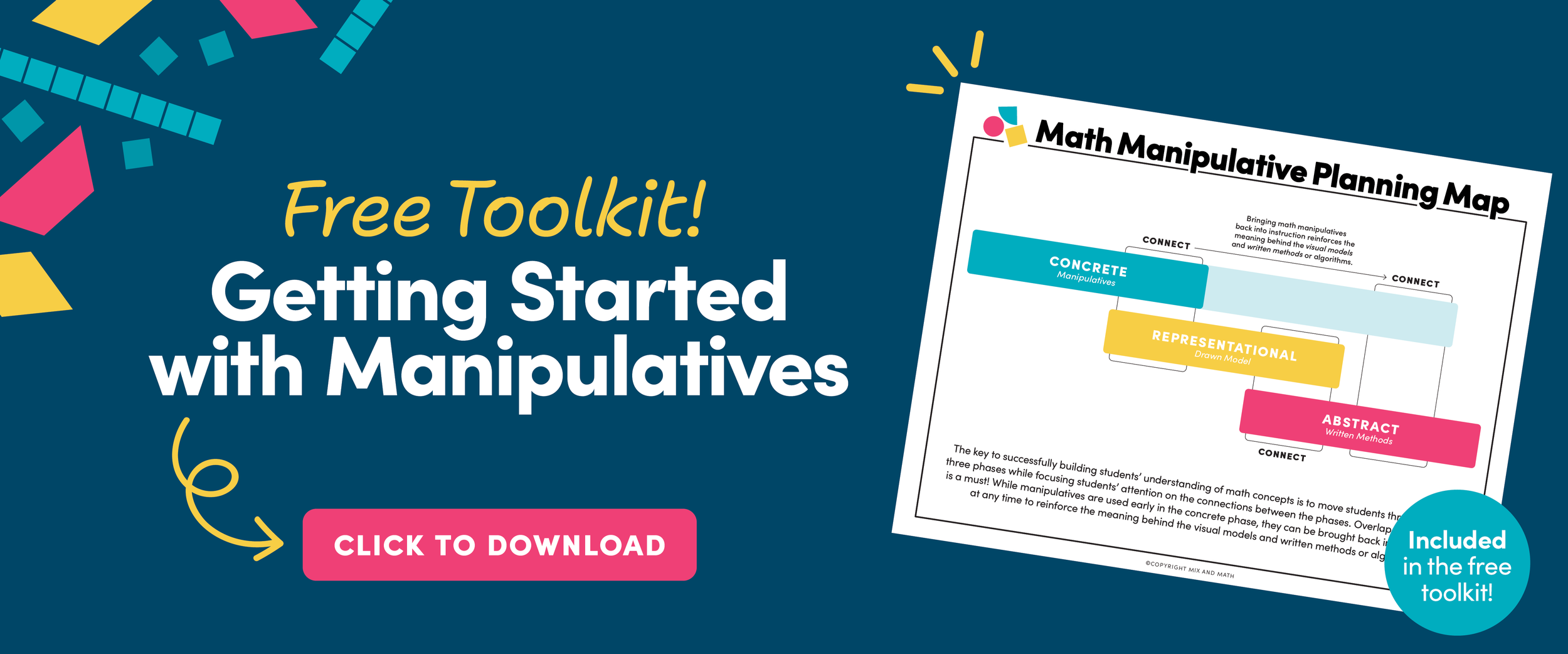Planning Hands-On Lessons With Math Manipulatives
Welcome to the Getting Started With Math Manipulatives series! I created this series to share tips and ideas to help you break through the biggest roadblocks that may be holding you back from using math manipulatives in your upper elementary classroom.
Did you miss Part 3 of the series? Click here to read about Managing Math Manipulatives in the Classroom.
If you're not using manipulatives in your classroom as much as you'd like because you're not sure when to use them or where they fit into the learning process, then Part 4 and Part 5 are for you! They will help you incorporate manipulatives into your math instruction in a meaningful way.
Let's start off with where math manipulatives fit in the learning process, using the CRA model. This model will help guide your math lessons!
Even if the CRA model isn't new to you, don't skip this post! There's a common mistake many teachers make when using the CRA model, and I want to help you avoid it. I've got a few actionable tips to help make the CRA model work even better for your students.
How Manipulatives Help Students Learn Math
There is a well-researched framework for teaching math called the CRA framework (sometimes called the CPA framework). Each letter represents how students work with or show a math concept:
Concrete - using manipulatives or other hands-on objects
Representational/Pictorial - using pictures, models, and visuals
Abstract - using symbols and written methods such as algorithms
Ideally, when students are introduced to a new math concept, they start with math manipulatives, move into visual representations, and then progress to written methods.
At a basic level, this might look like a student using base ten blocks to represent combining two whole numbers, then using dots or tally marks in a place value chart to highlight the structure of adding multi-digit whole numbers, and lastly using an algorithm to add.
Using physical objects early in the learning process makes math more visible for students. These hands-on experiences give them a clear model of what's actually happening with the math. As their understanding grows, students begin to rely on mental images of those experiences, and their representations become more sophisticated. Over time, students gradually shift from using manipulatives and visual models to written methods.
So when teachers ask, "When in the learning process should students start using math manipulatives?" the simple answer is: when they're first introduced to a new math concept.
Using the CRA model and thinking through how you would "show the math" in each phase is a great place to start if you're just getting started with math manipulatives in your upper elementary classroom.
If this is the first time you've heard of the CRA model, I want you to stop reading and download the Math Manipulative Planning Map that I created for you! Use this map to help you think through each of the three phases-manipulatives, visual models, and written methods. You can find it in the FREE Getting Started With Math Manipulatives Toolkit!
If the CRA model is brand-new to you, I know that's already a lot to take in… but I do want you to know how to use it effectively from the beginning and avoid a common mistake teachers make with the CRA model!
Increasing the Effectiveness of the CRA Model
I often hear teachers say, "My students do great with manipulatives, but once we put them away, they start to struggle." Sound familiar?
This usually happens when we move on from manipulatives too quickly. Too often, students use manipulatives for one lesson, then put them away and move on to a visual model, and finally swap that for an algorithm.
But here's one of the biggest secrets to success with the CRA model:
Plan for overlap between the phases.
Instead of treating each phase of the CRA model as a separate way of thinking, we want to help students build bridges between the phases.
Here are two examples of how this can look in the classroom.
Using the CRA Model without Connecting the Phases
Lesson #1: Students get a task that requires them to subtract fractions and students use pattern blocks (concrete) to help them solve it.
Lesson #2: Students get a similar task, but this time they are asked to draw rectangular models (representational or pictorial) to help them solve.
Lesson #3: Students receive another task and are encouraged to use the standard algorithm (abstract) to solve the problem.
We likely wouldn't move this quickly through this concept, but do you see how there is no overlap between the phases? Each phase feels like a completely different method, instead of a connected learning process.
In this case, students learn three separate ways of subtracting fractions rather than seeing that they all represent the same type of thinking.
Using the CRA Model with Intentional Connections between Phases
Let's look at two modifications that could be made in the scenario above to create intentional overlap between each of the phases.
Lessons #1 and #2: Rather than simply writing the answer they got with their pattern blocks, the teacher has students draw rectangular models or number sentences in their math journal to document their work with manipulatives. This brings in the representational and/or abstract phases depending on how students choose to show their thinking.
Lessons #2 and #3: As students begin using an algorithm, some will need extra support. The teacher has them work through the problem using manipulatives or pictorial models alongside the algorithm. Some students phase out manipulatives quickly, while others continue using concrete and/or pictorial models longer. Either way, students build understanding and confidence while making strong connections.
With these tweaks, students aren't learning three isolated ways of solving. Instead, they are using each phase as a way to build toward more sophisticated and efficient ways of showing their thinking.
In my planning, I often spent more time focusing on how to connect the phases than on each phase by itself. I promise you'll be amazed at the impact making these connections has on students' learning!
That's all for Part 4 of the series! In Part 5, we'll wrap things up by taking a look at what this all actually looks like in action!
Don’t miss the rest of the Getting Started With Math Manipulatives in Upper Elementary Series





